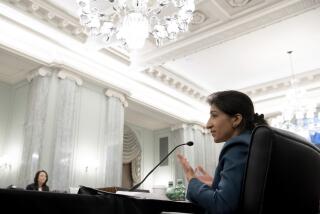Microsoft’s Antitrust Battles
Here is a chronology of the antitrust actions involving Microsoft:
*
June 1990: Federal Trade Commission secretly investigates possible collusion between Microsoft and IBM.
*
Feb. 1993: FTC takes no action, closes investigation after commissioners deadlock.
*
Aug. 1993: Justice Dept. takes over Microsoft investigation.
*
July 1994: Company signs consent decree agreeing to change contracts with PC makers and eliminate some restrictions on other software makers.
*
Aug. 1995: After a judge throws out the decree which is later reinstated by the Appeals Court, U.S. District Judge Thomas Penfield Jackson approves the decree.
*
Oct. 1997: Justice Dept. sues Microsoft, alleging it violated the 1994 consent decree.
*
May 1998: Justice Dept. and state regulators file landmark antitrust suit against Microsoft.
*
Oct. 1998: Antitrust trial begins before Judge Jackson.
*
Nov. 1999: Jackson releases preliminary findings, labeling Microsoft a monopoly that has used its position to harm competition and consumers.
*
Jan. 2000: Steven Ballmer named CEO, succeeding Gates, who becomes chairman and chief software architect.
*
April 2000: Settlement efforts collapse. Jackson finds Microsoft in violation of antitrust laws. Justice Dept. urges court to split Microsoft into two companies.
*
May 2000: Fighting the proposed breakup, company submits its own plan, which includes changes in its business practices.
*
June 2000: Jackson orders the company be split into two companies.
*
June 2001: Federal appeals panel reverses Jackson’s breakup order but rules that Microsoft violated antitrust laws.
Researched by NONA YATES / Los Angeles Times






